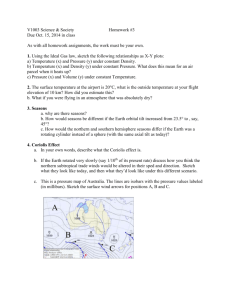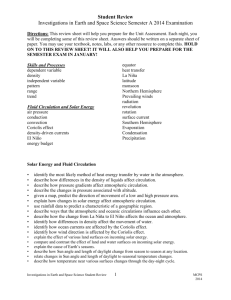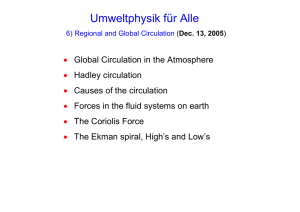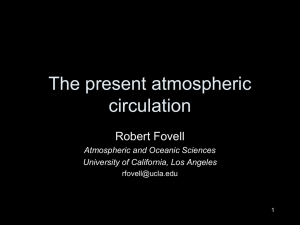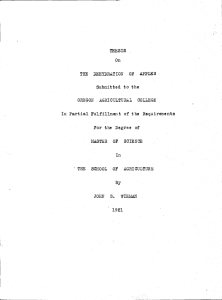Ch. 19 Study Guide
advertisement
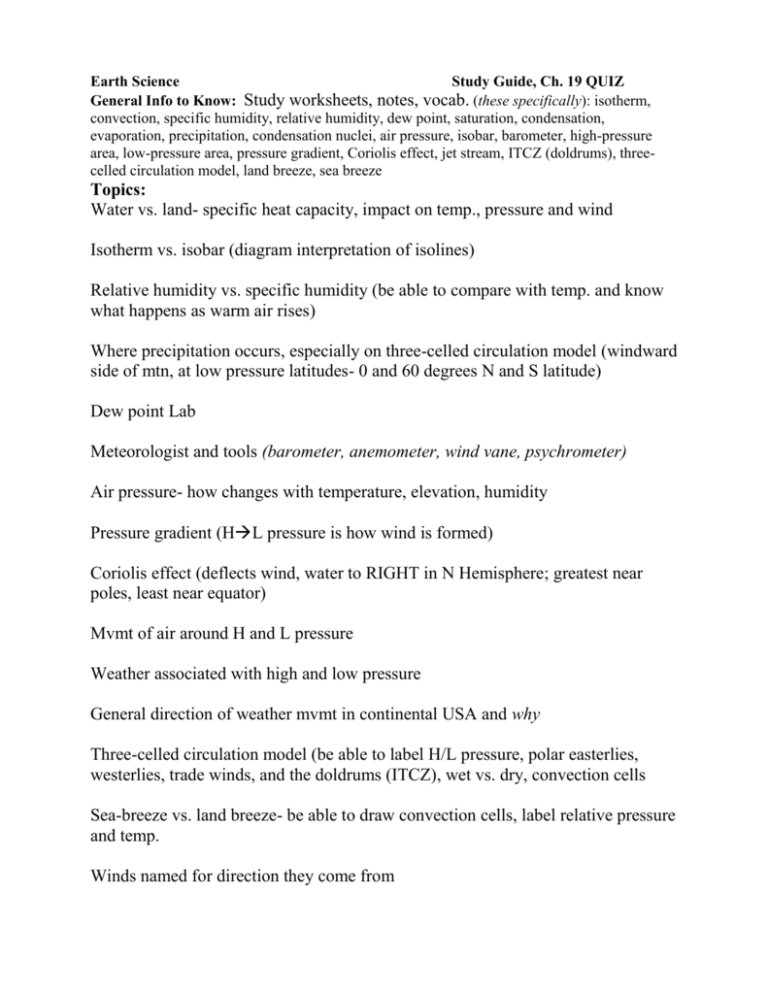
Earth Science Study Guide, Ch. 19 QUIZ General Info to Know: Study worksheets, notes, vocab. (these specifically): isotherm, convection, specific humidity, relative humidity, dew point, saturation, condensation, evaporation, precipitation, condensation nuclei, air pressure, isobar, barometer, high-pressure area, low-pressure area, pressure gradient, Coriolis effect, jet stream, ITCZ (doldrums), threecelled circulation model, land breeze, sea breeze Topics: Water vs. land- specific heat capacity, impact on temp., pressure and wind Isotherm vs. isobar (diagram interpretation of isolines) Relative humidity vs. specific humidity (be able to compare with temp. and know what happens as warm air rises) Where precipitation occurs, especially on three-celled circulation model (windward side of mtn, at low pressure latitudes- 0 and 60 degrees N and S latitude) Dew point Lab Meteorologist and tools (barometer, anemometer, wind vane, psychrometer) Air pressure- how changes with temperature, elevation, humidity Pressure gradient (HL pressure is how wind is formed) Coriolis effect (deflects wind, water to RIGHT in N Hemisphere; greatest near poles, least near equator) Mvmt of air around H and L pressure Weather associated with high and low pressure General direction of weather mvmt in continental USA and why Three-celled circulation model (be able to label H/L pressure, polar easterlies, westerlies, trade winds, and the doldrums (ITCZ), wet vs. dry, convection cells Sea-breeze vs. land breeze- be able to draw convection cells, label relative pressure and temp. Winds named for direction they come from Practice Questions 1.In what direction(s) is/are air pressure exerted? 2. As elevation increases, air pressure _____________ 3. As humidity increases, air pressure _____________ 4. As temperature increases, air pressure ______________ 5. Instrument used to measure air pressure 6. Decreasing air pressure signals what kind of weather? 7. Increasing air pressure signals what kind of weather? 8. What do closely spaced isobars on a weather map indicate? 9. What causes wind? 10. What causes pressure differences? 11. Instrument used to measure wind speed? 12. Instrument used to determine wind direction? 13. How is a wind named? 14. Where is Coriolis effect the greatest? 15. Does the Coriolis effect depend on an object’s direction of movement? 16. In what direction does weather move across the United States? 17. Sketch the three-celled circulation model. Label high and low pressure latitudes, whether they are wet or dry, and sketch in the circulation … what type of heat transfer is this? Label the winds. 18. Assume it is a hot day early in the summer. Sketch the circulation pattern during the day and label it as a land or sea breeze. Then sketch and label the pattern for that evening, assuming it cools off.
